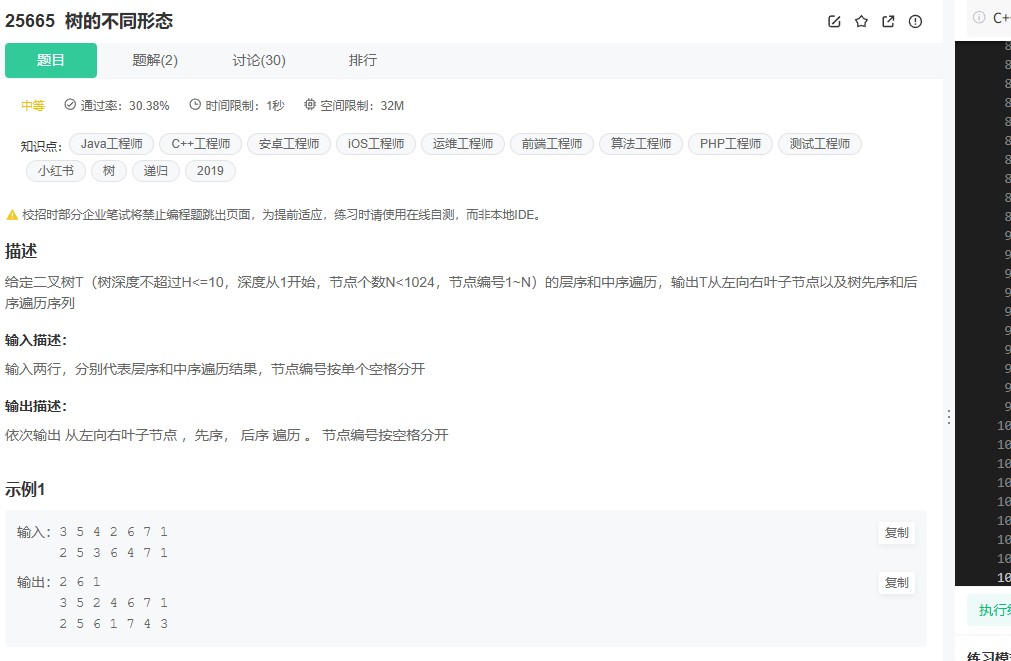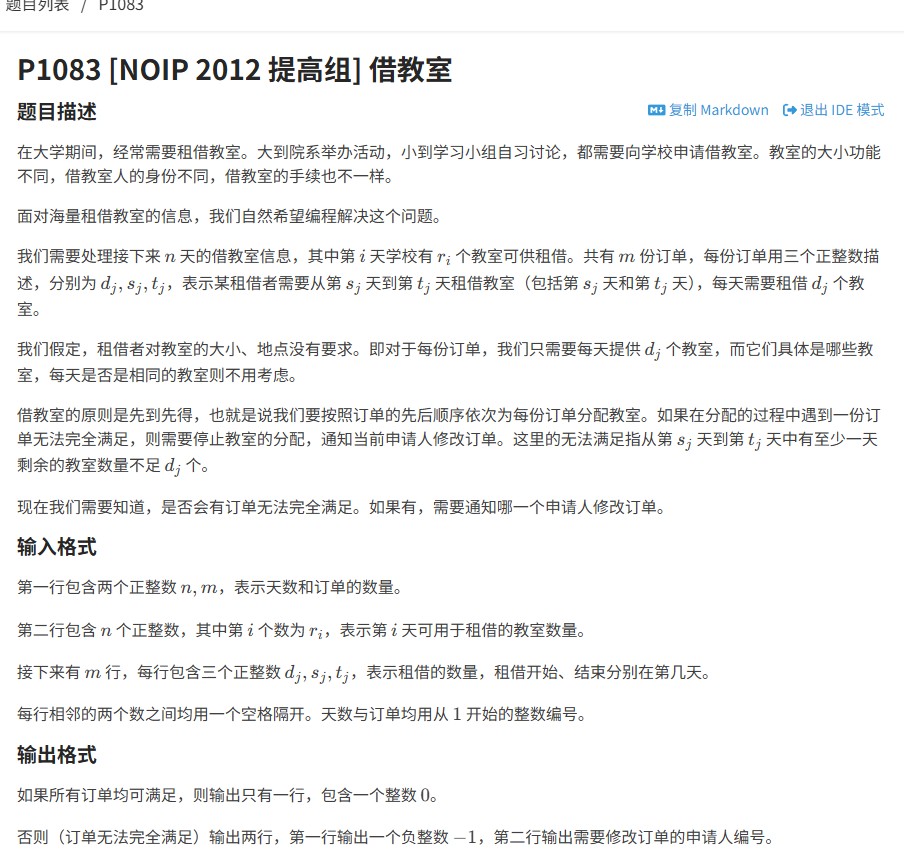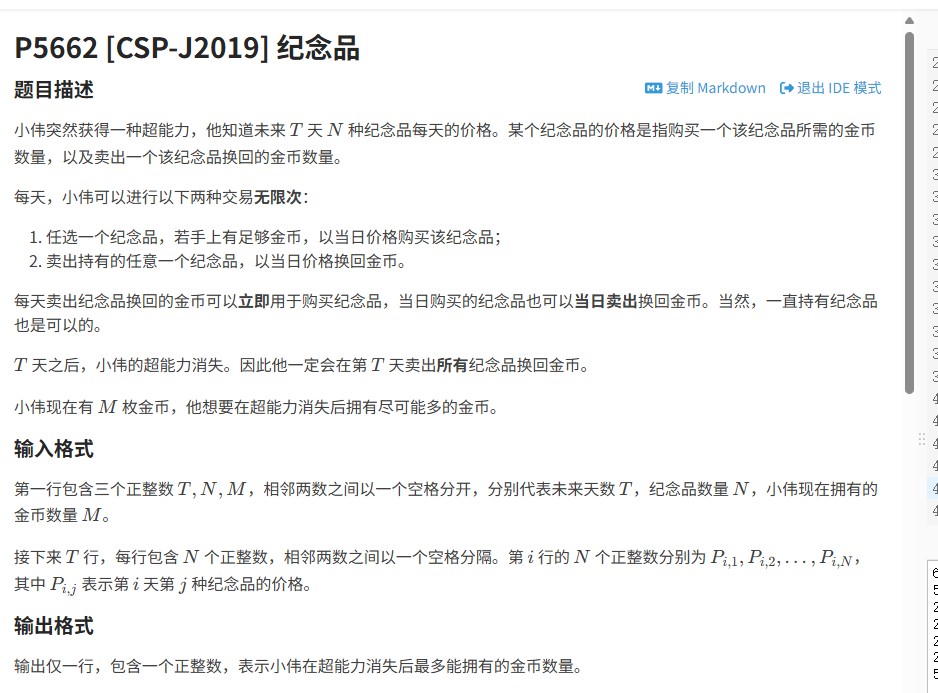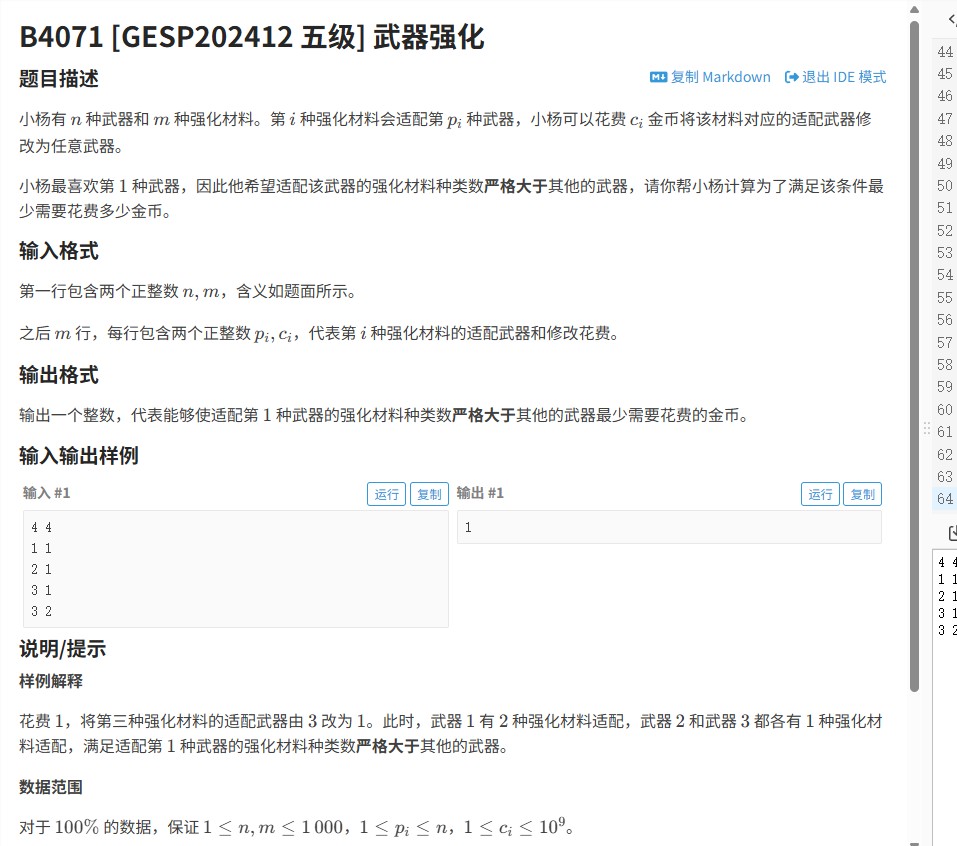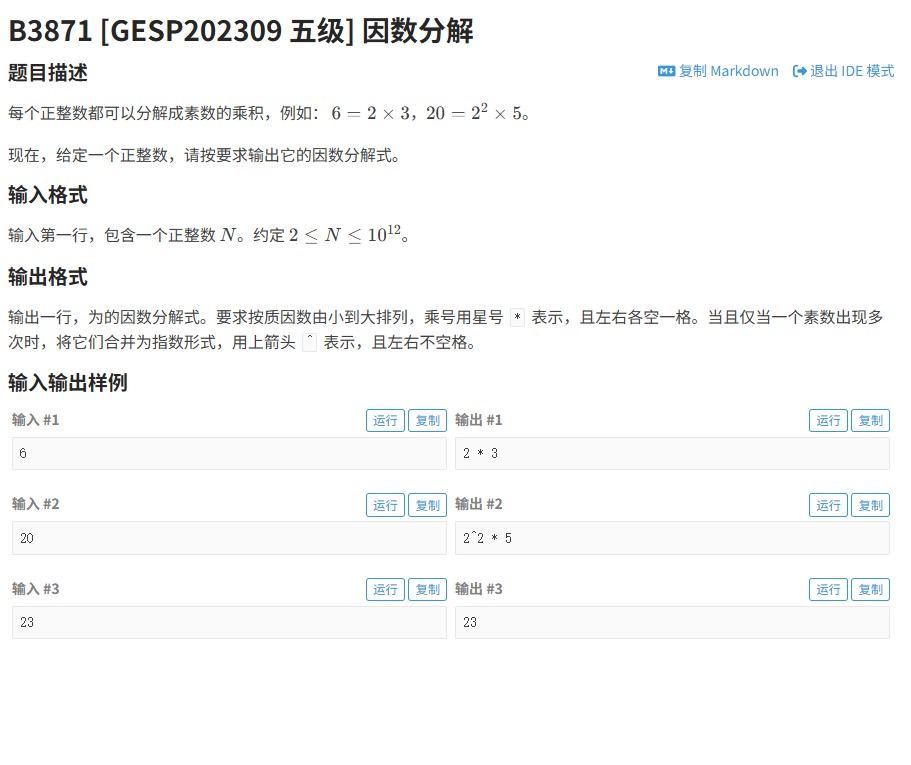动态规划实战:牛客3895题最大子矩阵和问题详解

一、问题背景与算法思路
本题需要在一个n×n的矩阵中找出和最大的子矩阵。我们采用经典的"降维打击"策略,将二维矩阵问题转化为一维数组的最大子段和问题,通过动态规划高效求解。
二、完整代码实现(带详细注释)
#include <iostream> #include <vector> #include <climits> using namespace std; // 求解一维数组的最大子段和(Kadane算法) int maxSubArray(vector<int>& nums) { int maxSum = nums[0]; // 全局最大值 int current = nums[0]; // 当前连续子数组和 for(int i = 1; i < nums.size(); i++) { // 决策:是单独取当前元素,还是接续前面的子数组 current = max(nums[i], current + nums[i]); // 更新全局最大值 maxSum = max(maxSum, current); } return maxSum; } // 求解二维矩阵的最大子矩阵和 int maxSubMatrix(vector<vector<int>>& matrix) { int n = matrix.size(); int maxSum = INT_MIN; // 初始化为最小整数值 // 枚举所有可能的行范围(从上边界top到下边界bottom) for(int top = 0; top < n; top++) { vector<int> temp(n, 0); // 存储列累加结果 for(int bottom = top; bottom < n; bottom++) { // 将当前行范围内的列累加 for(int col = 0; col < n; col++) { temp[col] += matrix[bottom][col]; } // 对列累加结果求最大子段和 int current = maxSubArray(temp); // 更新全局最大值 maxSum = max(maxSum, current); } } return maxSum; } int main() { int n; cin >> n; vector<vector<int>> matrix(n, vector<int>(n)); // 读取n×n矩阵 for(int i = 0; i < n; i++) { for(int j = 0; j < n; j++) { cin >> matrix[i][j]; } } // 输出最大子矩阵和 cout << maxSubMatrix(matrix) << endl; return 0; }
三、关键算法要点
降维思想:通过列累加将二维问题转化为一维
Kadane算法:O(n)时间求最大子段和
边界处理:正确初始化最大值(INT_MIN)
累加技巧:逐步累加行减少重复计算
四、复杂度分析
时间复杂度:O(n³) (枚举行O(n²) × Kadane算法O(n))
空间复杂度:O(n) (临时数组存储列累加和)
五、常见错误提醒
六、学习价值
通过本题可以掌握:
二维问题的降维处理技巧
动态规划的状态转移思想
Kadane算法的精妙设计
矩阵问题的常见处理模式
原创内容 转载请注明出处

